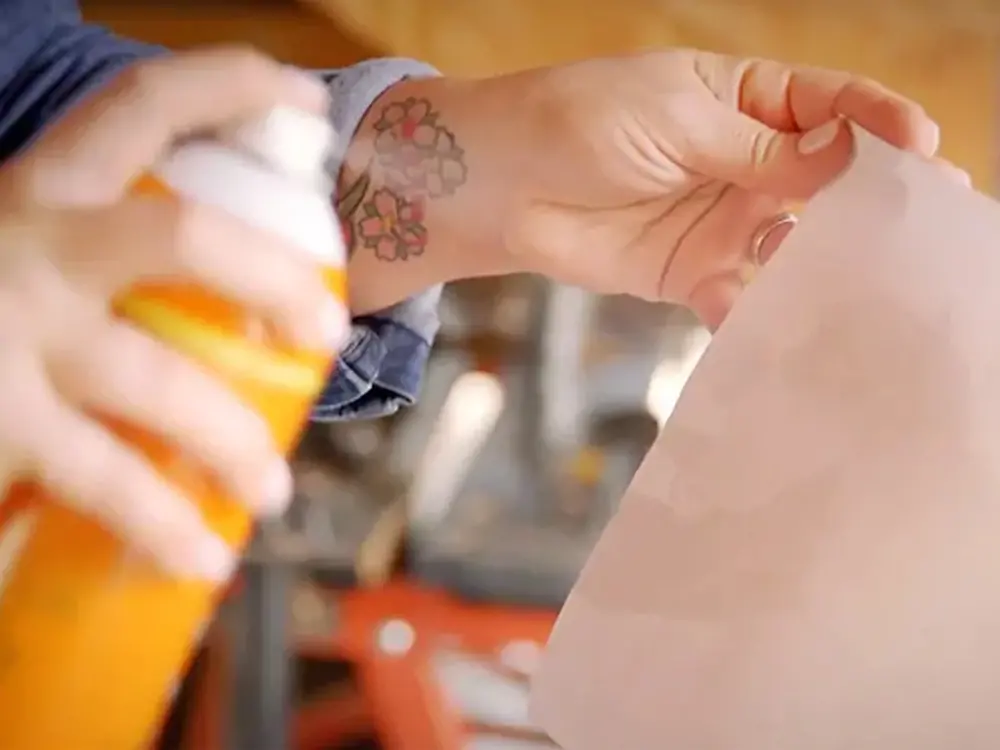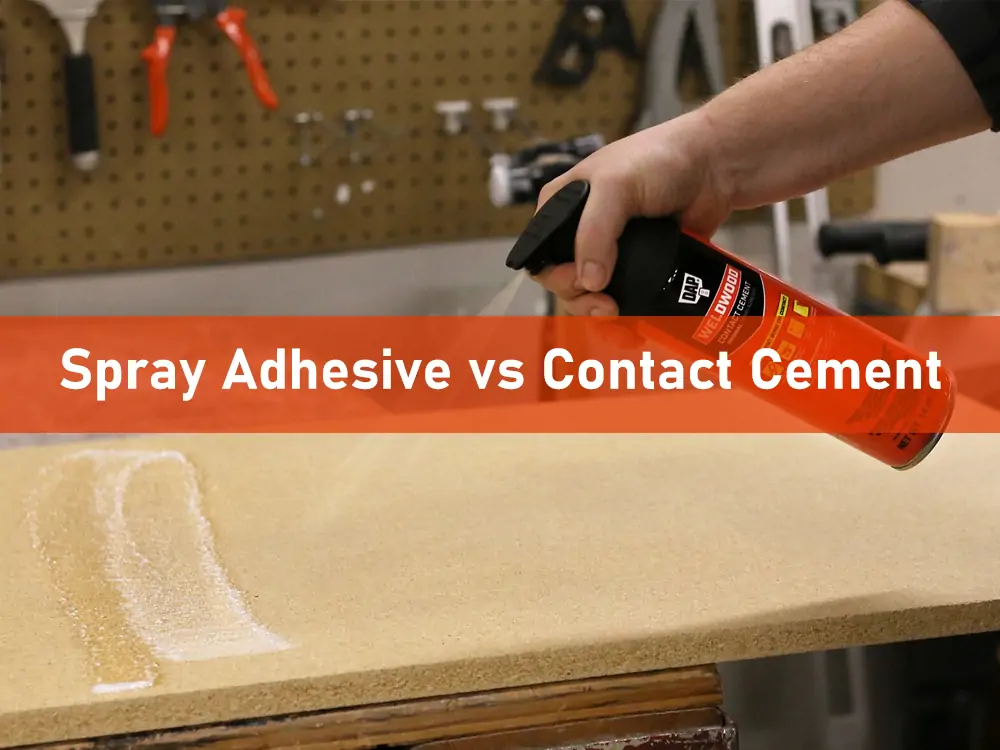Spray adhesive is applied through a spray nozzle, while contact adhesive requires spreading on both surfaces. Each type has specific applications and benefits.
Spray adhesive offers quick application and is suitable for lightweight materials. On the other hand, contact adhesive provides strong, permanent bonds and is ideal for heavy-duty projects. Understanding the differences between these adhesives helps in choosing the right one for your specific needs.
Whether you are working on crafts, woodworking, or DIY projects, selecting the appropriate adhesive can make a significant difference in the quality and durability of the final outcome. Let’s delve deeper into the distinctions between spray adhesive and contact adhesive to determine which one best suits your requirements.
Introduction To Adhesives
Adhesives play a crucial role in various DIY projects and construction work. Understanding the different types of adhesives is essential when choosing the right one for your needs. Two popular options are spray adhesive and contact adhesive.
Spray adhesive is a versatile option commonly used for bonding lightweight materials such as paper, fabric, and foam. Its ease of use and wide coverage make it suitable for larger surfaces. On the other hand, contact adhesive is a strong and fast-acting adhesive that creates a bond when two surfaces come into contact. It is often used for bonding heavy materials like wood, metal, and plastic.
Both adhesives have their advantages and applications. Spray adhesive provides a temporary bond and allows repositioning, while contact adhesive offers a permanent bond with high strength. Consider the specific requirements of your project to determine which adhesive is the most suitable.
Remember, always follow the instructions provided by the manufacturer for optimal results. Proper application and storage are crucial to ensure the effectiveness of the adhesive.

What Is Spray Adhesive?
Spray adhesive is a type of adhesive that is applied in a fine mist, providing even coverage. Its characteristics include quick drying time, strong bonding, and suitability for lightweight materials. Common uses of spray adhesive include crafting, artwork, and temporary bonding applications such as positioning templates and stencils.
Exploring Contact Adhesive
Explore the differences between spray adhesive and contact adhesive for your projects. Discover the unique applications and benefits of each adhesive type in various crafting and DIY endeavors. Choose the adhesive that best suits your needs for successful and efficient bonding solutions.
Spray adhesive and contact adhesive are two popular types of adhesives used in various applications. Contact adhesive, also known as contact cement, is a strong adhesive that bonds quickly and provides a durable bond. It is commonly used in woodworking, laminating countertops, and bonding plastic laminates.
When it comes to key features, contact adhesive offers excellent initial grab, high strength, and resistance to heat and moisture. It is also known for its versatility as it can bond a wide range of materials including wood, metal, plastic, and fabric. This makes it a preferred choice for many industrial and DIY projects.
Contact adhesive finds primary applications in industries such as construction, automotive, and furniture manufacturing. It is commonly used for bonding laminates, veneers, and decorative trim. It is also suitable for bonding foam, rubber, and leather, making it useful in upholstery and footwear industries.

Comparing Performance
When comparing performance between spray adhesive and contact adhesive, it’s important to consider factors such as bonding strength, application ease, and drying time. Spray adhesive offers quick and easy application with even coverage, while contact adhesive provides a strong, long-lasting bond suitable for larger surface areas.
Both options have their own advantages depending on the specific project requirements.
| Spray Adhesive | Contact Adhesive |
| Suitable for lightweight materials | Ideal for heavy-duty projects |
| Offers temporary bonding | Provides permanent adhesion |
| Quick application and repositioning | Requires precise application due to strong bond |
Ease Of Use And Application
Spray adhesive offers easy application with its aerosol form, providing quick and convenient usage. Contact adhesive, on the other hand, requires more precision during application, making it suitable for specific bonding needs. Both adhesives offer different levels of ease of use based on the application requirements.
| Spray Adhesive | Contact Adhesive |
| Requires less preparation time due to its quick-drying nature. | Preparation time might be slightly longer as it needs to cure before bonding. |
| Application process involves evenly spraying the adhesive on the surface. | Application process includes applying adhesive to both surfaces and allowing it to dry before joining. |
Safety And Environmental Considerations
Ensure safety and environmental considerations when choosing between spray adhesive and contact adhesive. Assess the potential hazards and impact on the environment before making a decision, keeping in mind factors such as volatile organic compounds and proper ventilation. Make a responsible choice for your project.
| Health Risks | Environmental Impact |
| Both adhesives can cause skin irritation and respiratory issues. | Spray adhesive may release harmful volatile organic compounds (VOCs). |
| Contact adhesive fumes can be toxic if inhaled in large quantities. | Contact adhesive might contain chemicals harmful to the environment. |
Cost Analysis
Comparing the cost of spray adhesive versus contact adhesive is crucial for budget-conscious projects. Understanding the cost analysis can help in making an informed decision about which adhesive to use, based on the specific requirements and financial considerations.
| Cost Analysis |
| Price Comparison |
| Spray Adhesive tends to be more cost-effective than Contact Adhesive. |
| Contact Adhesive is generally pricier but offers stronger bonding capabilities. |
| For small projects, Spray Adhesive may offer better value for money. |

Choosing The Right Adhesive For Your Project
Choosing the right adhesive for your project can make a significant difference in its success. When deciding between spray adhesive and contact adhesive, consider the specific requirements of your project. While spray adhesive offers versatility and ease of application, contact adhesive provides a strong and permanent bond.
Make an informed choice based on your project’s needs.
| Factors to Consider |
| Spray adhesive offers quick bonding, ideal for lightweight materials and temporary projects. Contact adhesive provides strong, permanent bonding suitable for heavy-duty applications. |
| Consider the materials you are bonding and the permanence required before choosing between spray and contact adhesive. |
| Expert recommendations suggest spray adhesive for crafts and hobbies, while contact adhesive is favored for construction and woodworking projects. |
Frequently Asked Questions
What Is The Difference Between Spray Adhesive And Contact Adhesive?
Spray adhesive and contact adhesive differ in the way they are applied. Spray adhesive is applied in a mist, while contact adhesive is applied using a brush or roller. Spray adhesive is suitable for large areas, while contact adhesive is better for smaller, precise applications.
Which Adhesive Is Stronger, Spray Or Contact Adhesive?
Contact adhesive is generally stronger than spray adhesive because it creates a more permanent bond. Spray adhesive is suitable for temporary bonding, while contact adhesive is recommended for permanent bonding of materials like wood, metal, and plastic.
Can Spray Adhesive Be Used On Fabric?
Yes, spray adhesive can be used on fabric. It is suitable for bonding lightweight fabrics, like cotton, polyester, and silk. However, it is not recommended for heavy fabrics or materials that require a strong, permanent bond.
Is Contact Adhesive Waterproof?
Yes, contact adhesive is waterproof. It can withstand exposure to water, making it suitable for outdoor applications. However, it is important to ensure that the surfaces being bonded are clean and dry for the adhesive to work effectively.
Conclusion
Both spray adhesive and contact adhesive have their own unique advantages and disadvantages. While spray adhesive is faster and easier to apply, contact adhesive offers a stronger and more durable bond. Ultimately, the choice between the two depends on the specific project requirements and personal preferences.
It’s important to carefully consider the materials being used, the surface area being bonded, and the desired outcome before making a decision. By weighing the pros and cons of each option, you can make an informed choice and achieve the best results for your project.

